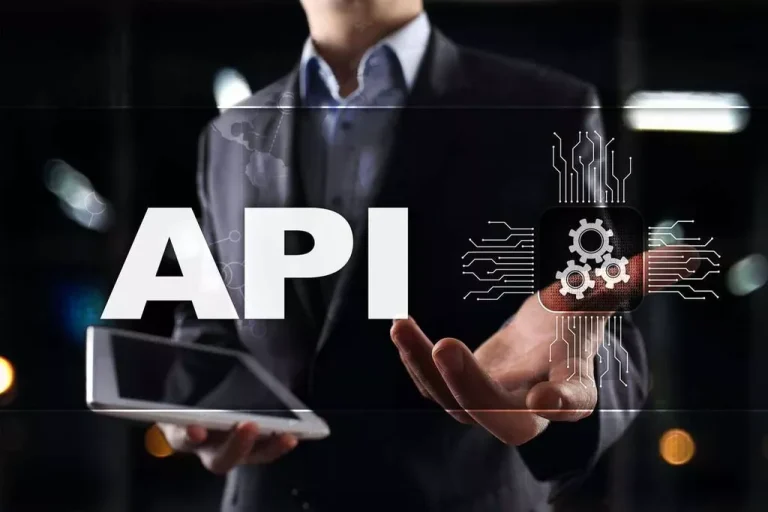In addition, you can also learn about the risks of a blockchain bridge and examples of initiatives. Although a vital part of a genuinely crosschain future, blockchain bridges present various risks to customers and even those who may not have bridged belongings. OKX Insights explored these dangers in an in-depth analyzing the exploit of the Wormhole crosschain protocol in February 2022. Trust-minimized bridge implementations don’t https://www.xcritical.com/ require trusted central entities to speak between blockchains. Instead, they use mild clients, which receive source chain block headers on the target blockchain. With reference to a complete historical past of block headers, a light client can attest that the supply blockchain did certainly confirm a transaction earlier than minting wrapped belongings on the goal chain.

It is mainly a protocol governed under a centralized strategy, operator, or entity. Trusted blockchain bridge has earned the name as users have to trust the status or identification of a centralized bridge and deposit their funds on the bridge. Some of the examples of trusted blockchain bridges have proven proof of user-friendly interfaces, which might help in encouraging more customers. Users first deposit property to a sensible contract on the source blockchain to bridge their assets using a trust-minimized implementation. The protocol generates proof of the transaction’s validity using the block header. A relayer script then communicates block headers from the source blockchain to the goal blockchain.
Polygon Bridge
This kind of methodology does not necessitate the usage of a centralized third party to enable deals. This isn’t perfect cross-chain communication, but it is a system in which transactions are carried out between chains. The outline of blockchain bridge basics, their working, varieties and advantages show their potential for ruling the way ahead for blockchain. The blockchain community can leverage the bridges for benefits of interoperability and scalability, alongside providing true decentralization.
The Tezos blockchain uses validating nodes known as bakers to implement its proof-of-stake consensus algorithm. If Chain A held fifteen tokens and then transferred 5 tokens to Chain B, Chain A would nonetheless have fifteen tokens (with 5 tokens locked), however Chain B would have five extra. Since the sunshine client on the target blockchain can reference earlier block headers, it can verify that the proof-of-work confirming the transaction was executed accurately. When hashed using the source blockchain’s hashing algorithm, proof-of-work could be decided by checking if the output falls below the current network issue threshold.
- The Stargate Bridge (AB) is a LayerZero-based protocol that facilitates the change of native belongings between blockchain networks.
- In the previous years, she came up with many clever ideas that introduced scalability, anonymity and extra options to the open blockchains.
- In the next sections, we’ll delve deeper into the precise forms of bridges obtainable, their numerous functionalities, and the thrilling potential they maintain for revolutionizing the financial landscape.
- As with each custodial answer in cryptocurrency, the bridge have to be extremely reputable and trusted.
These chains can mint NFTs instantly, leveraging established bridges to draw early liquidity and users from various blockchain ecosystems. In essence, NFT bridges empower protocols and dApps to interrupt free from their unique chains, embrace multi-chain performance, and chart their own impartial but interconnected futures. Users deposit property right into a pool on one blockchain and obtain an equal worth on another blockchain. Instead of individual copies, the liquidity pool methodology envisions a constantly flowing river of cross-chain worth. Relays allow blockchain networks to watch transactions and events occurring on different chains. Relays operate on a chain-to-chain foundation, with out the participation of dispersed nodes, allowing a single contract to function a central client for other nodes on many chains.
Recommendations For Using Blockchain Bridges
One example could be the Ronin Bridge Protocol exploit, where hackers were able to exploit a vulnerability in its system to steal over $600 million in ETH and USDC. For instance, you need to use a blockchain bridge to make one bitcoin compatible with an Ethereum pockets. The blockchain bridge will lock your BTC in a contract on Bitcoin’s mainchain and mint an equal of wrapped BTC (WBTC). Wrapped BTC is pegged to the worth of bitcoin and can be unwrapped to get an equal value of BTC at any level. Ultimately, the hacker(s) managed to make off with about $600m value of ETH and USDC, marking one of the most devastating blockchain bridge attacks of all time.

Because the goal blockchain good contract can not mint USDT itself, it must depend on pooled assets on both facet of the bridge. For a consumer to send USDT from Ethereum to Solana, there must already be extra USDT in the target chain’s smart contract than the entire being sent. Trusted bridges are primarily custodial platforms that rely on counterparties to validate transactions whereas appearing as custodians of bridged assets. Trusted bridges rely upon a central entity to operate, and users have to put their trust in them, basing the judgment on their reputation. For example, within the case of WBTC, bitcoin is wrapped on Ethereum while the BTC is held in custody with BitGo.
Consensus
Validators are incentivized to ensure the integrity of bridge exercise through rewards and penalties. Examples of trustless bridges embody the Arbitrum Bridge and the Polygon Bridge. Every blockchain is created in a protected ecosystem with its own algorithm and consensus protocols, leading to limitations for each blockchain.
These bridges are basically software that enables two distinct, separate blockchains to work together with one another. There are several potential outcomes to those interactions – similar to changing token standards, transferring digital property across networks, or minting new coins. Wrapped asset bridges facilitate the transfer of non-native assets between blockchains.
Risks Of Using Blockchain Bridges
Trustless, or decentralized bridges, are the popular sort of bridge among the blockchain neighborhood. These bridges use good contract algorithms to lock and unlock belongings across separate networks. They often work identical to another decentralized blockchain, relying on an internet of impartial validators to process transactions and obtain consensus.
Bridges have allowed more interoperability within the blockchain house and enable customers to move funds and knowledge throughout quite so much of blockchains. This allows customers to reap the advantages of decrease charges, quicker transactions, or other unique options supplied on different blockchains. Bridges assist create a more liquid Web3 ecosystem and foster development activity by making it simpler for developers to test the relative strengths of various platforms. In distinction, trustless bridges are designed to operate autonomously using sensible contracts. Activity on trustless bridges is typically managed in a similar way to the blockchain itself where a set of validators want to succeed in consensus over transactions.
Therefore, to redeem property locked on the supply blockchain, users must burn their wrapped property on the target blockchain. Burning merely refers again to the strategy of sending assets to an handle to which nobody holds the personal key required to move received tokens. As the price to use the network has increased over the years in tandem with the demand for block house, the necessity for alternate networks grew to become more and more apparent. In 2021, we noticed many of these Layer-1 blockchains thrive as Ethereum’s gas prices alienated would-be customers. A more sophisticated type of token bridge enables a consumer to perform exchanges between networks. Using a crosschain DEX, like Multichain, Rango Exchange or Gravity DEX, a person can deposit one asset on the source blockchain and obtain the equivalent value in a different asset on the goal blockchain.

Look for bridges like Ren, which have undergone multiple audits by esteemed crypto security consultants, providing users with enhanced confidence within the code’s integrity. By understanding the potential vulnerabilities and the essential safeguards, we are in a position to collectively strive in the course of a future, fostering innovation in finances. Protocols as quickly as limited to fundraising on Ethereum, like Hyperliquid and dYdX, can now migrate improvement to their very own chains, fostering greater autonomy and tailor-made functionality. Bridges seamlessly switch liquidity between chains, allowing these protocols to combine blockchain bridge new blockchains and increase their person base whereas retaining essential liquidity pools. The blockchain bridges’ transformative power and loads of alternatives for companies lies in a multitude of benefits, each paving the way for a more environment friendly, inclusive, and progressive crypto ecosystem. A trusted bridge is typically run by a identified entity, requiring the user to trust one other get together with their property, or data, when utilizing the bridge.
Blockchain bridges are essential as a outcome of they permit for interoperability between different blockchain networks. This implies that customers can access a wider vary of decentralized applications and providers and usually are not restricted to a single blockchain ecosystem. A blockchain bridge connects two separate blockchain networks, allowing them to communicate and change knowledge and belongings. They started as simple connectors, facilitating the motion of individual property throughout isolated chains.
However, Wrapped Bitcoin specifically allows customers to ship BTC to and from Ethereum and doesn’t support additional assets or blockchains. For a fluid blockchain future, interoperability just isn’t only important – it’s a necessity. Being in a place to work and transfer property throughout networks might be a driving drive within the digital world, from cryptocurrency networks to Metaverse platforms. A sidechain, or baby chain, is a secondary blockchain that is linked to the main chain, or father or mother chain, allowing assets to be exchanged at a set rate between the parent and sidechain. They are basically an IOU for the belongings, and such derivatives will often take a different ticker image to avoid confusion. Yet, none of these unbiased networks can natively talk with one another.

Here is a top stage view of the notable blockchain bridge variants you can use for transferring assets and information between blockchain networks. These bridges function solely through a collection of sensible contracts permitting users to bridge tokens across blockchains. Several well-liked blockchain bridges have gained prominence in the crypto community, every providing unique features and capabilities. These multi-chain platforms enable the transfer of belongings like cryptocurrency and tokens between main blockchains. Instead, blockchain bridges work via good contracts, which are essentially a compliation of laptop code. When you need to transfer assets from one chain to another, the blockchain bridge locks up your funds inside its good contract.
As the number of blockchain networks will increase, so does the demand for blockchains to become interoperable. Yes, blockchain bridges may be quite secure, so long as the underlying know-how is continually audited and patched. Steering clear of outdated bridges and sticking to highly-reputable platforms may help traders keep away from the trustless bridge hacks which occurred throughout much of 2022. Finally, blockchain bridges that use liquidity swimming pools is usually a helpful supply of earnings for savvy DeFi buyers. This works much the identical as providing liquidity to an Automated Market Maker (AMM) like PancakeSwap and WOO Network.















